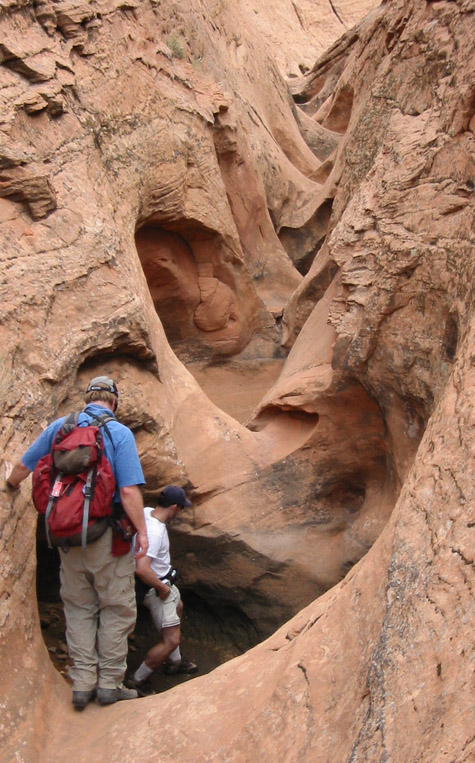| Bedrock and Sediment Controls on River Incision, Henry Mountains and Navajo Mountain, Utah |
 |
Project Summary
Personnel: Joel Johnson (Ph.D.) Kristen Cook (M.S.) Leonard Sklar (Ph.D.) Although river channels occupy a very small percentage of the land surface, river incision rates ultimately control regional denudation rates and patterns because rivers set the boundary condition for hillslope erosion. Channels also dictate much of the topographic form of mountainous topography: the drainage network defines the planview texture of the landŽscape and channel longitudinal profiles set much of the relief structure of unglaciated mountain ranges. There has been considerable progress in the past decade on understanding the interactions among climate, erosion, and tectonics. This has been accomplished primarily with generic rule sets for river incision that lump together a diverse set of erosional mechanisms. Much has been gained from these generic analyses: we now know well what we need to know better and why. There is a clear need now to develop and test process-specific models of river incision into bedrock. In particular, the quantitative relationships among bedrock properties, river sediment load (flux, size, sorting), flow hydrodynamics, and bed morphology stand out as important unknowns. Field observations, and preliminary proof-of-concept experiments, support the conceptual framework that erosion rates depend on feedbacks among evolving bed topography, fluid flow, and sediment transport – the problem of river incision into unfractured cohesive rock is essentially a problem of interface evolution dictated by strong dynamic coupling among these 3 factors. Recent theoretical and experimental advances demonstrate that detailed physically-based theoretical incision models and controlled laboratory experimentation provide a powerful combination for study of these problems. We propose an experimental study using a combination of open-channel flume experiments and detailed measurements of flow and sediment interaction within individual erosional bedforms. We plan to vary the primary controlling variables (flux and size distribution of sediment; channel slope; water discharge; and substrate hardness) in a systematic exploration of parameter space. Bed morphology will be allowed to evolve naturally, and the critical feedbacks between bed morphology, fluid dynamics, sediment flux, and local erosion rate will be quantified – including, for example, the systematics of erosion from both bedload and suspended load. Based on scaling arguments, field observations, and some preliminary experiments, we formulate six quantitative hypotheses that can and will be tested by direct measurement of erosion rate, bed topography (using high-precision laser mapping), sediment transport, and fluid flow conditions. |